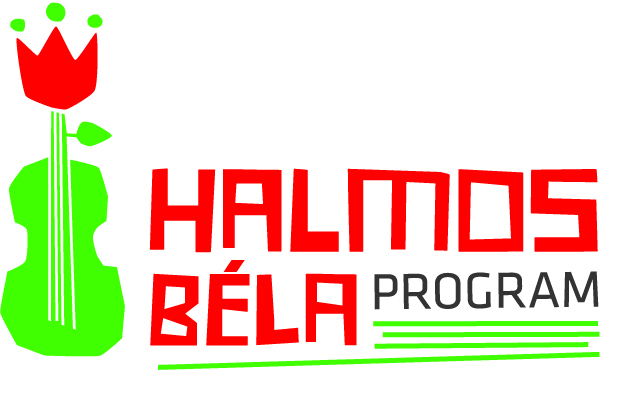
For a good hundred years it’s been the final hour, many have sounded the alarm, and you have to admit, with a reason. But the traditional domain of folk music that seems to disappear or dissolve can be observed from the direction that we today call authentic folk music, which itself has been the stage of an evolutionary process. When traditional Hungarian folk music manifested itself was a historical moment of prime importance, but the road leading up to this moment had not been and will not be paved exclusively with folk influences. Hungarian and Gypsy folk music of the period that today may still be studied in an authentic form, was thoroughly nourished by classical musical romanticism, the revolutionary flames at the onset of the 19th century, and cultural influences from the neighbouring nations; therefore, pure folk music exists not, we could in fact say that all folk music is, in reality, world music. This claim sounds rather bold, even today, and partly along these lines is where folk music and world music part ways with one another. Béla Bartók’s “pure source” in this respect cannot be found, however, we need to see that practicing musicians do not have a mind receptive for this idea.
The next three albums are good examples to how urbanization influenced musicians who were torn from their folk musical environments, how a modern zeitgeist reveals itself in different ways, but we also get to see how contemporary processes failed to form a melting pot for a one-sided musical genre: we can experience a colourful multitude that surpasses earlier times in attitude, style, performance, even in the case of classical forms. Or is polarization itself that constitutes world music?
Csángálló: Fel az úton /”Up the Road”/ (Fonó, 2016)
The band Csángalló produced their debut album 7 years after their formation. This goes to show how (un)important it is for a good live band to have a CD. I deliberately avoided the word “concert band”, as there is a vehement life-force present on the recordings too. Their primary habitat is not the stage, though they move confidently in open places as well and while listening to them one will really feel sorry that in Hungary, spontaneous busking is not allowed. Apart from that they do not play festival music, but have recorded a varied repertoire, the band shows different character in all 9 songs.
According to the band, at the core of their music you’ll find influences from the Csángó people of the Western Moldavian and the Gyimes regions, but upon listening to their album one may find that they incorporated elements from further down south as it is obvious there is personal experience behind their songs, for they have established their unique style by sustaining a clearly Csángálló-flavour, despite the different influences. This is a mere supposition, but I seem to detect a slight nod in the opening song’s title (A viking vándor – “The Viking Wanderer”) to the band’s Swedish accordionist, Johannes Olsson, and he nods back in return. Olsson carries an outstanding line of melody and joining him in the heated tempo are the special reed instruments, the clarinet and the saxophone (Zoltán Gárgyán and Sára Csobán); there is no escaping the effect of the strangely pulsating rhythm: the witty rhythm seems to break by chipping a semiquaver off the end of a phrase here and there. It is worthy to note that here is a semi-modernistic orchestration of Moldavian music from after the war, the technique of double reed instruments. This is, therefore, our starting point.
The song-structure is at times unclear, but this does not mean that the sometimes inconsequently and intricately linked episodes come off as irritating. One exception might be the song “Szultán” that ends in a slow fadeout while showing Turkish influences with its zurna-imitation on the clarinet. This song could have had a properly rounded ending. One might feel that the episodes that follow one another in a looser fashion introduce the live feel, the greater habit, the improvisational character that advances processes forward with a nourishing strength. The cimbalom is not a fundamental instrument in the band, however, guest musician Ferenc Zimber plays a significant role by rolling out the Transylvanian patterns with sufficient power. In a similar fashion, the vocalists (Melinda Balogh, Lili Kaszai, Sári Horváth) of the song “Kocsma az út szélén” (“Pub On The Road”) elevate the whole album’s mood both in solo and while accompanying the wind instruments.
We get to hear two songs that are quite unexpected: one is “Hora Swing” whose ragtime-infused tunes catch us off guard, and the other being the psychedelic finale, “Goa”. The organ-dominated main harmony is cleverly infused by the jaw harp, while above it the kaval cries; we can hear effects too, thus the sound becomes the twisted reflection of a party culture that summarizes the urban folk of Csángálló from a novel direction with a sufficient sense of humour.
EtnoRom: Roma ízek /”Romani Flavours”/ (Author’s edition, 2016)
It would be easy to say that EtnoRom is the continuation of Kalyi Jag, a sort of offspring to the legendary band. A good 10 years ago this may have been true, but today we are talking about an autonomous band with genuine songs going its own way. Their harmonious, beautiful, dialogue-like singing of József Balog and Ágnes Künstler, leads us through Roma folklore arriving at their very own songs. These songs bear independent character, yet we feel the continuous presence of the traditional Gypsy culture; a part of the songs –thanks to Magda Szécsi- may be attributed a higher literary value, but they could also be considered as authentic Gypsy songs.
The pure sound instantly impresses us, the mixing is free of frippery. The album’s greatness, however, does not come from the aspiration to simplicity in song and performance, this only helps to unravel the great questions of the Gypsy identity, their vocalized and weighty stories. Balog and his team see the “legacy” of the band “Fekete vonat” clearly, despite them playing urban songs now. While the album “Karácsony szent este” (“Holy Christmas Eve”) can only partially be regarded as Christmas-themed, the melody of its strongest song (“Egész világ ellenségünk” – “The Whole World Is Our Enemy”) summarizes a grand pain that EtnoRom, through its songs, is able to alleviate –for the album’s time being. The voices of Balog and Künstler are staggering in their purity and lead the listener through the cleverly engineered album to its final cathartic song. The song “Képzelj el egy jobb világot” (“Imagine a Better World”) states that God created them different and the hymnic rendering presents this difference from an internal point of view.
EtnoRom draws on authentic, modern, and urban influences, one may discover manouche jazz elements as well, while the kettle and the double bass are often replaced by the cajón. Enchanting solo and group singing and gentle instrumentation characterize the music, while the two singers stand out not only as noteworthy musical and compositional performers, but also as defining characters in Gypsy culture.
Tokos Zenekar: Hallgassátok meg, magyarim /”Listen Here, My Fellow Hungarians”/ (Author’s edition, 2016)
The Tokos Zenekar seems like a traditional dance-house band. Young guys from Kolozsvár with a likeable story, but as the introductory report shows, they are also affected by the 21st century. What can be their task, can and should they at all conserve traditions? And of course, does it make sense to publish a new folk music album nowadays?
Probably these questions are relevant only from an urban perspective; living in Transylvania, and while listening to the album, it becomes obvious how folk music permeates daily life. The young band members are also aware of the dilemmas, but the album “Hallgassátok meg magyarim” (“Listen Here, My Fellow Hungarians”) gives a stern answer to what is in our blood and what we have been carrying with us for centuries we cannot cast aside in the blink of an eye. And while we’re at it, we might as well make great music about it! Ranging from the Kalotaszeg region, the Tokos band draws on the music of many large ethnographic regions and since they know that most listeners won’t apply a microscopic scientific approach to their material, they are boldly mixing the styles.
Playing the prime violin is the extraordinary talent, Csongor Attila Tókos, who could easily be the idol of the new generation of violinists due to his expertise in tempo, articulation, and melody, even if the band has less to offer as regards stylistic novelties. The presence of the accordion is interesting, but the true driving force is the album’s eponymous song, which is an a cappella medley in essence, and due to its hymnic upbeat is a sort of key to the world, where religious folk songs meet folk music. It points out that traditional folk bands are now standing at a crossroads, and young talents like Tokos himself are going to have the mighty task of preserving values, while attempting to accustom themselves to the rapidly changing world.
Translated by Kálmán Farkas
A bejegyzés trackback címe:
Kommentek:
A hozzászólások a vonatkozó jogszabályok értelmében felhasználói tartalomnak minősülnek, értük a szolgáltatás technikai üzemeltetője semmilyen felelősséget nem vállal, azokat nem ellenőrzi. Kifogás esetén forduljon a blog szerkesztőjéhez. Részletek a Felhasználási feltételekben és az adatvédelmi tájékoztatóban.



